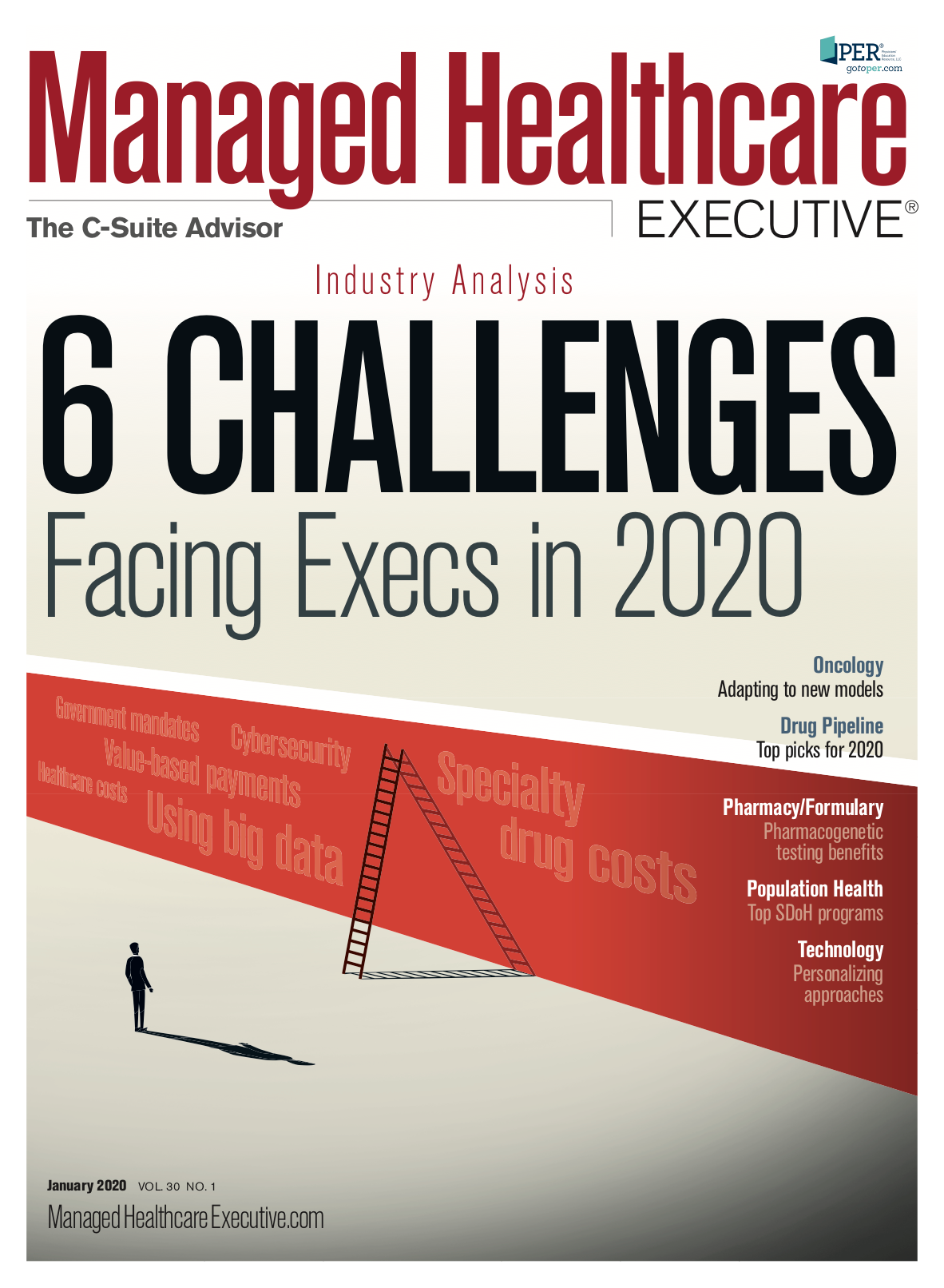Investing in the Future
Many of the challenges that face our industry in 2020 will require a fresh way of thinking.

Cynthia Hundorfean

As providers of medicine, our primary focus is-and always should be-the care and comfort of our patients.
But it can’t be our only focus. From affordability issues to the caregiver burnout epidemic, many of the challenges that face our industry in 2020 and beyond will require us to rethink the way we engage with our various stakeholders, taking a more holistic view of the entire healthcare system. These include:
Improving the workplace environment.
Of course, we want to create the best possible experience for our patients and customers. But to do that, we also have to create healthier workplaces for our employees, particularly on the provider side.
Medicine is a demanding field, and some clinical settings are inherently more stressful than others. We continuously ask a lot of our employees.
Which is why we need to have their backs, particularly when it comes to creating a culture of wellness. There’s a growing body of evidence suggesting a direct correlation between employee engagement and well-being, patient experience, and quality of care. Improving the overall workplace culture often improves patient outcomes.
In other words, it’s all interrelated-and if our employees aren’t at their best, our patients can’t be, either.
Related: IT’s Influence on Patient Care, Provider Accountability
There are a lot of complex pieces to this puzzle.
It means doing more to secure the safety of our caregivers, protecting nurses and aides from the violence that occasionally visits the emergency department. It means ensuring employees have enough time for meal breaks, so that they are properly hydrated and nourished. It means tightening the mental health safety net, deploying wellness resources proactively rather than reactively.
Above all, it means taking better care of each other.
Controlling costs and delivering value.
These are separate concepts, but from the perspective of the patient and the consumer, they go hand-in-hand.
Why? Because patients, while they may not understand the full complexity of our industry, understand at a basic level that health care simply costs too much. According to CMS, nearly one in five dollars in this country is spent on healthcare services or prescription medicine. And as high-deductible health plans continue to surge-about half of the pre-Medicare commercial market now has a high-deductible health plan-our patients are exposed to more and more out-of-pocket costs.
Bending the cost curve will require more preventive medicine, reducing overutilized testing and procedures, and delivering lower-acuity care in less-expensive settings.
It also requires a greater commitment to value-based care. As an industry, we’ve been predicting this shift for a while, but it’s happening slowly. At some point, we’ll have to jump in feet first.
Investing in the future of healthcare.
On one hand, our national goal is to provide better care for lower cost.
On the other hand, in order to achieve that goal, we know that we have to invest in the future -artificial intelligence, robotics, virtual health systems, and more modern care facilities. Over the coming decade, medicine will be virtualized and access will be democratized. All of this will come at a cost.
How do we bear the cost together, while minimizing financial impact to our customers? It will require increasing collaboration-and in some cases, full-scale integration-between payers, providers, and ancillary stakeholders.
Traditional boundaries between payer and provider, between pharmacy and supplier, have been blurring for years, and for good reason: Without clear sightlines among stakeholders, it’s hard for providers and insurers to align on the future state of healthcare.
Integration promotes that alignment and understanding. It also provides a shared platform to address current and future cost burdens, to streamline patient billing, to create value from big data, and to simplify the overall navigation of the healthcare industry for our patients.
Vertical integration won’t solve all of the industry challenges, but it can allow a more unified approach toward advancing the goals of improved health, greater affordability, and better experiences for employees and patients.
Cynthia Hundorfean is president and CEO of Allegheny Health Network (AHN), an integrated healthcare delivery system that serves Western Pennsylvania. AHN is part of the Highmark Health family of companies.

Extending the Capabilities of the EHR Through Automation
August 2nd 2023Welcome back to another episode of "Tuning In to the C-Suite," where Briana Contreras, an editor of Managed Healthcare Executive, had the pleasure of chatting with Cindy Gaines, chief clinical transformation officer at Lumeon.
Listen